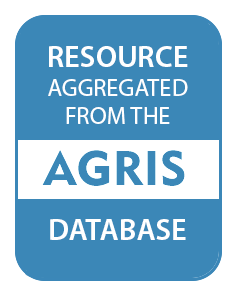What is AGRIS?
AGRIS (International System for Agricultural Science and Technology) is a global public database providing access to bibliographic information on agricultural science and technology. The database is maintained by CIARD, and its content is provided by participating institutions from all around the globe that form the network of AGRIS centers (find out more here). One of the main objectives of AGRIS is to improve the access and exchange of information serving the information-related needs of developed and developing countries on a partnership basis.
AGRIS contains over 8 million bibliographic references on agricultural research and technology & links to related data resources on the Web, like DBPedia, World Bank, Nature, FAO Fisheries and FAO Country profiles.
More specifically
AGRIS is at the same time:
A collaborative network of more than 150 institutions from 65 countries, maintained by FAO of the UN, promoting free access to agricultural information.
A multilingual bibliographic database for agricultural science, fuelled by the AGRIS network, containing records largely enhanced with AGROVOC, FAO’s multilingual thesaurus covering all areas of interest to FAO, including food, nutrition, agriculture, fisheries, forestry, environment etc.
A mash-up Web application that links the AGRIS knowledge to related Web resources using the Linked Open Data methodology to provide as much information as possible about a topic within the agricultural domain.
Opening up & enriching information on agricultural research
AGRIS’ mission is to improve the accessibility of agricultural information available on the Web by:
- Maintaining and enhancing AGRIS, a bibliographic repository for repositories related to agricultural research.
- Promoting the exchange of common standards and methodologies for bibliographic information.
- Enriching the AGRIS knowledge by linking it to other relevant resources on the Web.
AGRIS is also part of the CIARD initiative, in which CGIAR, GFAR and FAO collaborate in order to create a community for efficient knowledge sharing in agricultural research and development.
AGRIS covers the wide range of subjects related to agriculture, including forestry, animal husbandry, aquatic sciences and fisheries, human nutrition, and extension. Its content includes unique grey literature such as unpublished scientific and technical reports, theses, conference papers, government publications, and more. A growing number (around 20%) of bibliographical records have a corresponding full text document on the Web which can easily be retrieved by Google.
Members:
Resources
Displaying 3906 - 3910 of 9579Performance evaluation and cost assessment of a key indicator system to monitor desertification vulnerability
A number of studies have dealt with the assessment of potential and actual desertification risk using composite indices. The Environmental Sensitivity Areas (ESA) approach, developed in the framework of MEDALUS project funded by the European Community, is one of the most used procedures to monitor land vulnerability to degradation in the Mediterranean region. The final output of this procedure is an index (ESI) composing four indicators of climate, soil, vegetation, and land management based on 14 elementary variables.
Integrating forest biomass and distance from channel to develop an indicator of riparian condition
Living and detrital biomass in a riparian buffer zones ameliorate diffuse-source pollution originating from adjacent landscapes, with higher nutrient removal potential, particularly with respect to nitrogen and sediments, associated with more biomass (i.e., older forests). Pollution removal is mediated by sediment trapping and uptake of nitrogen by plants and by denitrification by microbial communities in root zones using organic matter and root exudates as energy sources.
Assessing rural landholders diversity in the Wet Tropics region of Queensland, Australia in relation to natural resource management programs: A market segmentation approach
Government agencies in many countries are encouraging rural landholders to improve their land management practices in order to improve the health of the natural environment. The level of adoption of improved practices by landholders is, however, highly variable. Understanding the diversity of rural landholders is an important step in increasing the uptake of improved land management practices. In this study, we investigate the factors that influence landholders to adopt recommended practices and use this to provide insights into how to encourage greater adoption of these practices.
Impact of Seed Policy Reforms and Intellectual Property Rights on Crop Productivity in India
The growth of private investment in developing‐country agriculture, new advances in the biological sciences, and rapid integration of developing countries into the global trading system has heightened interest in the topic of seed market and intellectual property rights’ (IPRs) policies among public policy‐makers, corporate decision‐makers and other actors in the agricultural sector.
Which policy would work better for improved soil fertility management in sub-Saharan Africa, fertilizer subsidies or carbon credits?
Why do many smallholder farmers fail to adopt improved land management practices which can improve yields and incomes? The reason is not always because these practices are uneconomical but sometimes it is because resource poverty prevents farmers from taking advantage of yield and income enhancing agricultural practices. In this study we examine the relative merits of using a carbon payment scheme compared to a subsidy policy to help reduce the cost of specific land management practices with productivity and ecosystem benefits such as carbon sequestration.


